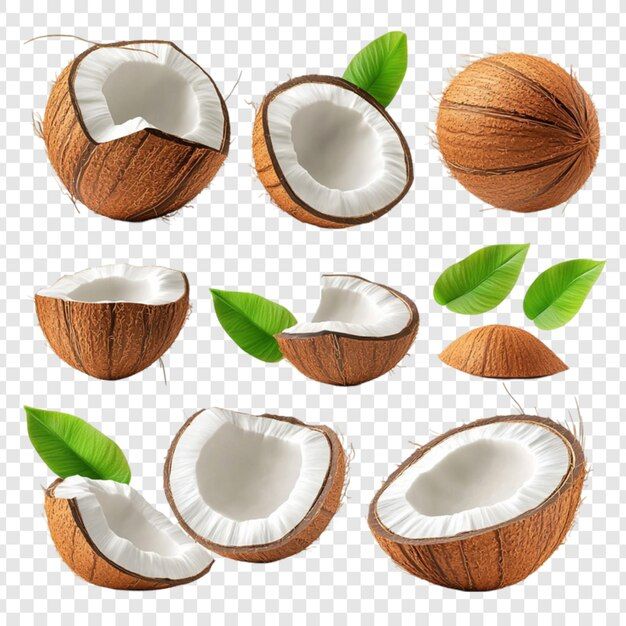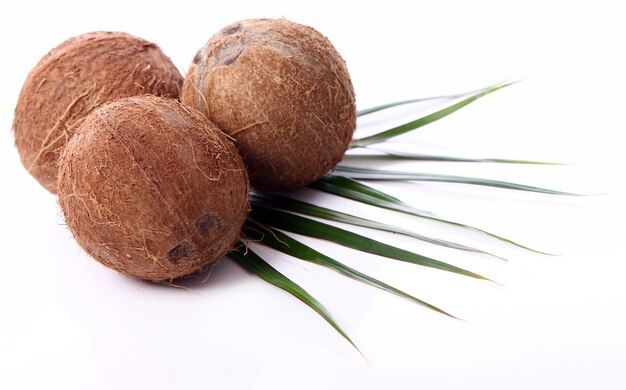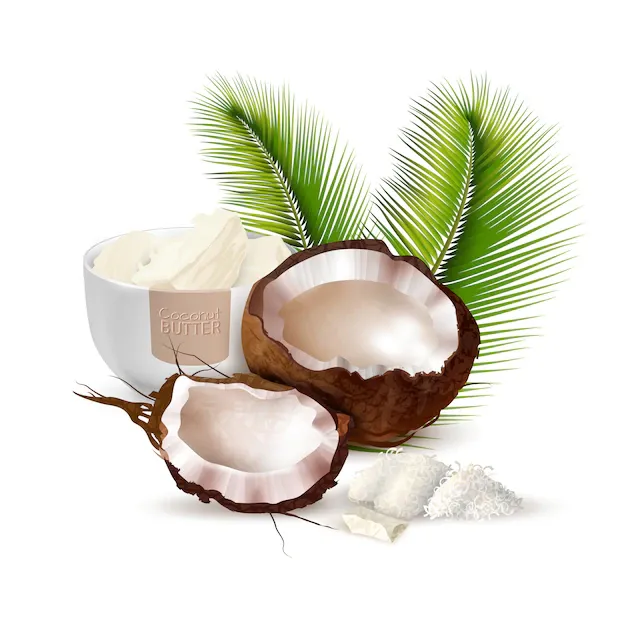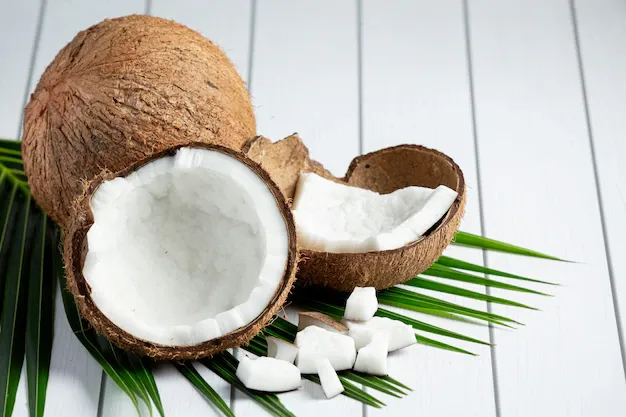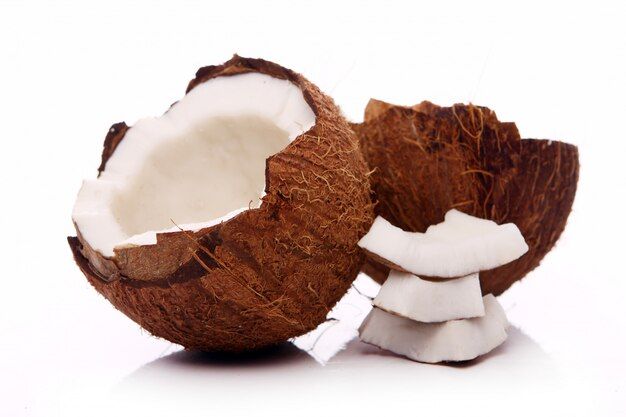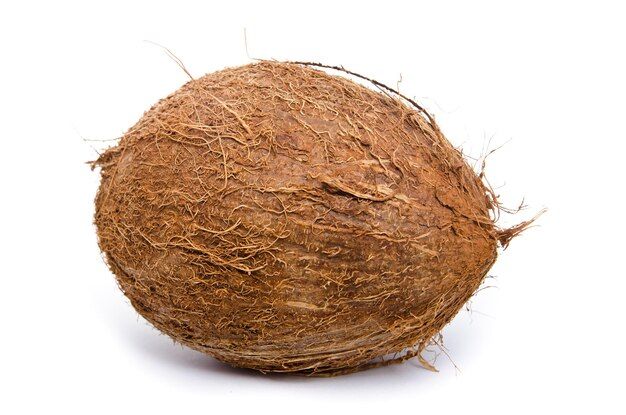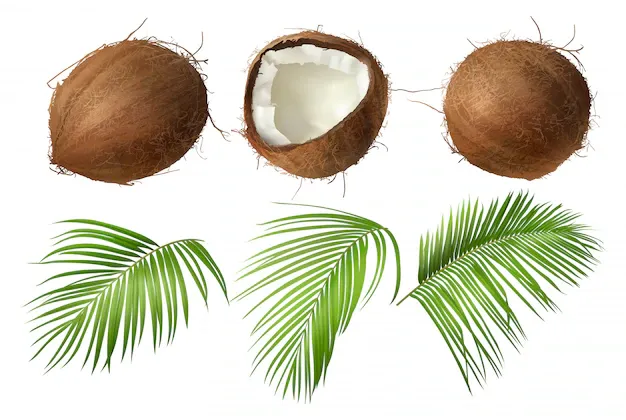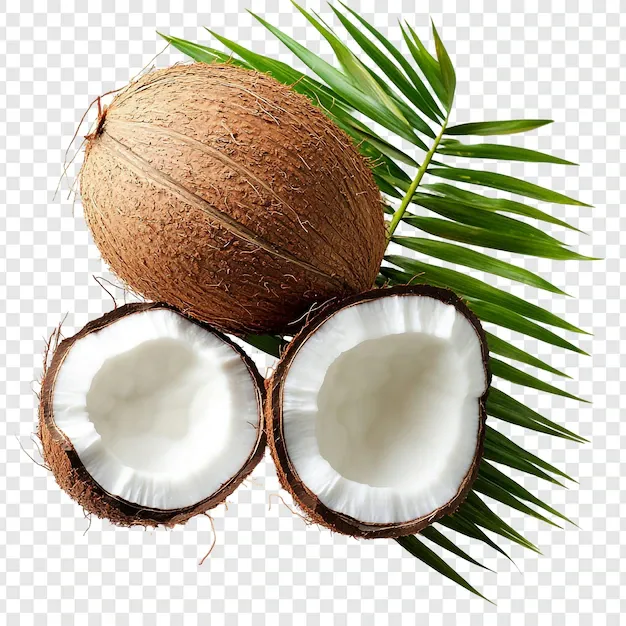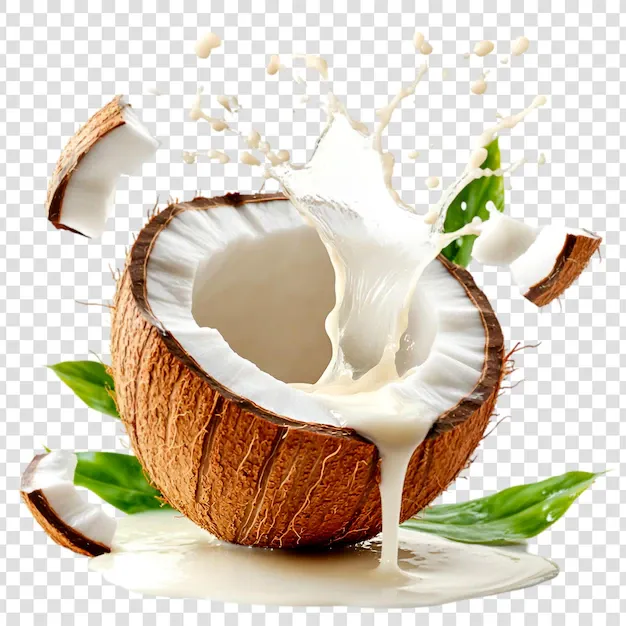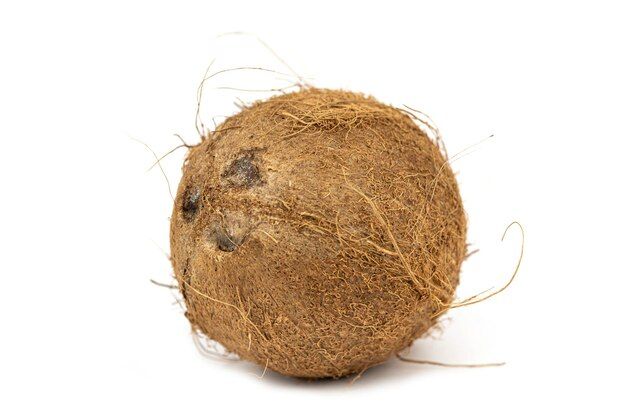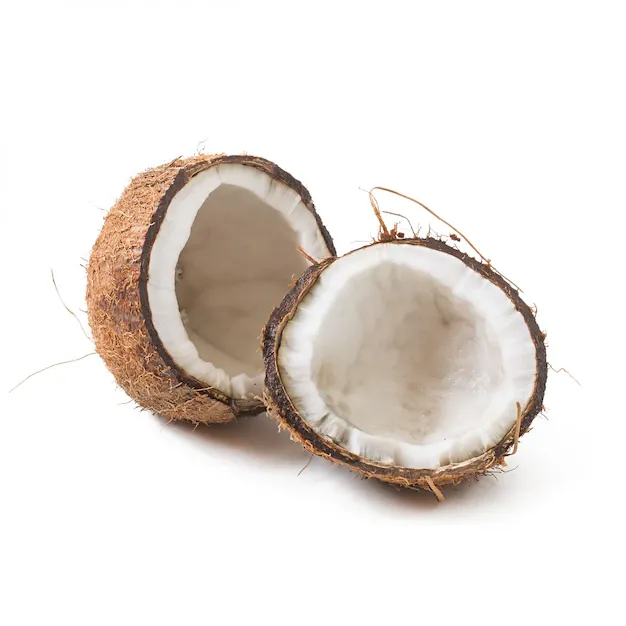Assalamu Alaikum friends
The Benefits and Popularity of Coconut
Coconut, known as the "tree of life," has been a vital part of human culture for centuries, particularly in tropical regions. It is revered for its versatility, offering nourishment, health benefits, and economic significance. From coconut water to coconut oil, every part of this fruit serves a purpose, making it one of the most cherished natural products worldwide.
Nutritional Benefits of Coconut
Coconut is rich in essential nutrients that provide numerous health benefits. The different parts of the coconut, such as the water, flesh, milk, and oil, each have their unique advantages.
Coconut Water: A Natural Hydrator
Coconut water is the clear liquid inside young green coconuts. It is packed with electrolytes such as potassium, sodium, and magnesium, making it a natural sports drink. Some key benefits include:
Hydration: Coconut water replenishes lost fluids and prevents dehydration.
Heart Health: It helps reduce blood pressure due to its high potassium content.
Digestive Aid: Coconut water contains bioactive enzymes that improve digestion.
Blood Sugar Regulation: Studies suggest that it may help lower blood sugar levels.
Coconut Flesh: A Nutrient-Dense Food
The white edible part inside the coconut is rich in dietary fiber, healthy fats, and essential minerals like manganese, copper, and iron. Some of its benefits are:
Improved Digestion: The high fiber content aids bowel movements and gut health.
Energy Boost: Coconut flesh provides healthy fats that serve as a quick energy source.
Bone Health: The minerals present in coconut strengthen bones and teeth.
Coconut Milk: A Dairy Alternative
Coconut milk, extracted from grated coconut flesh, is a creamy, lactose-free alternative to dairy. Its benefits include:
Boosts Immunity: Contains lauric acid, which has antibacterial and antiviral properties.
Supports Weight Management: Medium-chain triglycerides (MCTs) in coconut milk help burn fat.
Enhances Skin and Hair Health: Used in beauty treatments to hydrate skin and strengthen hair.
Coconut Oil: A Superfood with Multiple Benefits
Coconut oil is one of the most popular coconut-derived products, used for cooking, skincare, and even medicinal purposes. Its advantages include:
Weight Loss: The MCTs in coconut oil promote fat burning.
Heart Health: In moderation, it can increase good cholesterol (HDL) levels.
Brain Function: May help reduce symptoms of Alzheimer’s disease.
Skin and Hair Care: Coconut oil moisturizes skin and promotes healthy hair growth.
Soil Conditions
Coconut palms adapt to various soil types but prefer well-drained, fertile soil. Ideal soil conditions include:
Type: Sandy loam, alluvial soil, or well-drained lateritic soil.
pH Level: Between 5.2 and 8.0 (slightly acidic to neutral).
Drainage: Good water-holding capacity but without waterlogging.
Nutrient Content: Rich in potassium, phosphorus, and organic matter.
Medicinal Uses of Coconut
Coconut has been used in traditional medicine for centuries due to its natural healing properties. Some of its medicinal benefits include:
Boosts Immunity: Lauric acid found in coconut has antimicrobial effects that help fight infections.
Aids in Digestion: The fiber and enzymes in coconut improve gut health and prevent constipation.
Anti-Inflammatory Properties: Coconut oil and coconut water help reduce inflammation in the body.
Promotes Wound Healing: Coconut oil is often applied to cuts and wounds due to its antibacterial effects.
Regulates Blood Sugar: Coconut products, especially coconut oil, can help manage insulin levels.
Coconut’s Popularity Around the World
Coconut is widely consumed and valued across cultures. Its demand continues to rise due to its diverse applications in food, health, and beauty industries.
Culinary Uses
Coconut is a staple ingredient in many cuisines. Some popular uses include:
Asian Cuisine: Used in curries, desserts, and soups in countries like India, Thailand, and Indonesia.
Caribbean Dishes: Coconut milk is a key ingredient in tropical dishes.
Baking and Desserts: Coconut flakes, milk, and oil are used in cakes, cookies, and smoothies.
Beauty and Skincare Industry
Coconut oil and coconut-based products are widely used in cosmetics due to their natural moisturizing and healing properties. Some applications include:
Hair Care: Used in shampoos and conditioners to prevent dryness and dandruff.
Skin Moisturizer: Helps with hydration, reducing wrinkles, and treating eczema.
Lip Balms and Soaps: Many natural beauty brands use coconut oil in skincare products.
Industrial and Household Uses
Coconut is also used in non-food industries, such as:
Coconut Coir: Used in making ropes, mats, and brushes.
Coconut Shells: Used as fuel, charcoal, and decorative items.
Eco-Friendly Products: Biodegradable coconut-based utensils and packaging are gaining popularity
Economic Importance of Coconut
Coconut cultivation plays a crucial role in the economies of many tropical countries. Countries like the Philippines, Indonesia, India, and Sri Lanka are major producers. The coconut industry supports millions of farmers and contributes significantly to exports.
Some economic benefits include:
Employment Generation: The coconut industry provides jobs in farming, processing, and manufacturing.
Export Revenue: Coconut oil, desiccated coconut, and coconut water contribute to global trade.
Sustainable Agriculture: Coconut trees require minimal resources and are environmentally friendly.
Environmental and Sustainability Aspects
Coconut farming is considered eco-friendly as coconut trees:
Absorb CO2 and contribute to reducing global warming.
Require minimal chemical fertilizers.
Produce multiple by-products, reducing waste.
Support biodiversity by providing habitats for various species.
Sustainable coconut farming practices are being encouraged to protect the environment and ensure long-term productivity.
Coconut is a truly remarkable natural resource with immense benefits. From providing essential nutrients and medicinal properties to serving as a key ingredient in food, beauty, and industrial applications, its importance cannot be overstated. As demand continues to grow, sustainable cultivation and ethical sourcing practices will ensure that future generations continue to enjoy the incredible benefits of coconut.
Coconut is one of the most important tropical crops, widely grown in coastal and warm climates. It is often referred to as the "Tree of Life" due to its diverse uses, ranging from food and medicine to industrial applications. Coconut farming is an essential source of livelihood for millions of farmers, particularly in countries like India, Indonesia, the Philippines, and Sri Lanka. This article provides a comprehensive overview of coconut cultivation, including climate requirements, soil conditions, planting methods, maintenance, and harvesting.
Climate and Soil Requirements
Climate Conditions for Coconut Growth
Coconut trees thrive in tropical and subtropical climates. Ideal conditions include:
Temperature: 27–32°C (80–90°F) with minimal fluctuations.
Rainfall: 1500–2500 mm annually, well-distributed throughout the year.
Humidity: High humidity (above 60%) supports better growth.
Sunlight: At least 6 hours of direct sunlight per day is necessary.
Altitude: Grows well up to 1000 meters above sea level.
Coconut trees are highly sensitive to frost and drought. While they can tolerate short dry periods, prolonged droughts reduce yield.
Coconut Varieties for Cultivation
There are two main types of coconut trees:
Tall Varieties
Lifespan: 60–80 years.
First yield: 6–8 years after planting.
Productivity: Produces coconuts for many decades.
Common types: West Coast Tall, East Coast Tall, Tiptur Tall.
Dwarf Varieties
Lifespan: 30–40 years.
First yield: 3–4 years after planting.
Productivity: More coconuts per year but shorter lifespan.
Common types: Chowghat Orange Dwarf, Malayan Yellow Dwarf, Green Dwarf.
Hybrid Varieties
Hybrid varieties (crossbreeding tall and dwarf types) are highly productive. Examples include:
Chandrasankara (Tall × Dwarf)
Kerasankara (Dwarf × Tall)
Propagation and Planting Methods
Coconuts are propagated from seeds (matured nuts). The steps for planting are:
Seed Selection and Nursery Preparation
Seed Selection: Choose fully matured (10–12 months old), disease-free, and high-yielding coconuts for germination.
Germination:
Place the nuts in a nursery bed with 50% of the nut buried in the soil.
Provide shade and regular watering.
Sprouting occurs in 3–4 months
Transplanting:
Select healthy seedlings with 5–6 leaves and a strong root system (6–8 months old).
Transplant during the rainy season for better survival.
Planting Techniques
Pit Preparation
Size: 1 × 1 × 1 meter pits.
Soil Treatment: Mix topsoil with organic manure (10–15 kg compost or farmyard manure).
Spacing:
Tall varieties: 7–8 meters apart.
Dwarf varieties: 5–6 meters apart.
Hybrid varieties: 6–7 meters apart.
Planting Method
Place the seedling in the center of the pit.
Fill with soil and gently press to remove air pockets.
Water immediately after planting.
Ending here today..........
❤️ Thanks for visiting my blog.
I hope you like this blog.
If you like the blog, let me know through the comment.
See you again in the next blog.
Stay healthy, be careful and follow me.
And Subscribe my YouTube Channel
https://youtube.com/@littlerafi-h6l?si=tyZIp4JJPDkbTQtL

